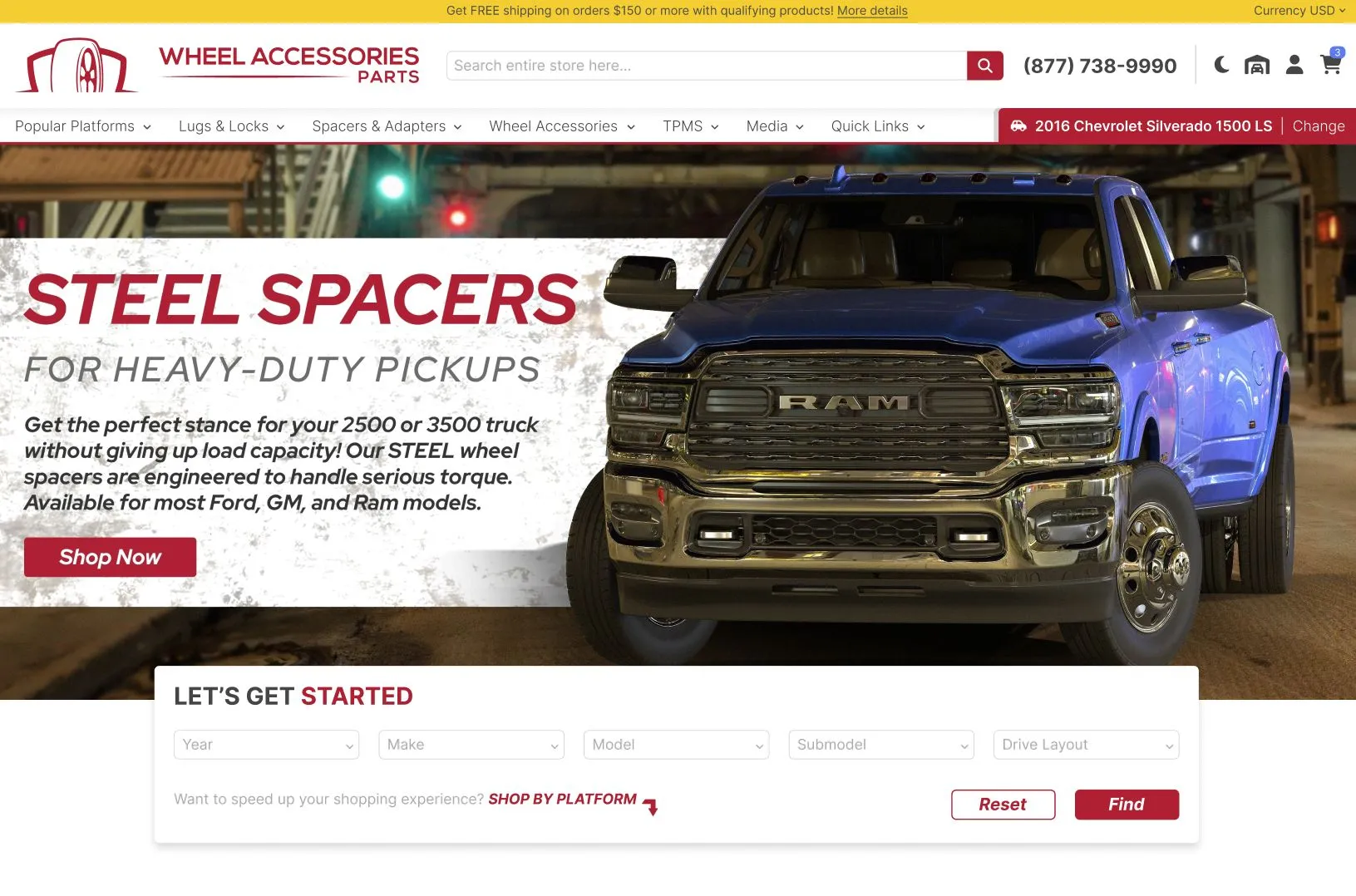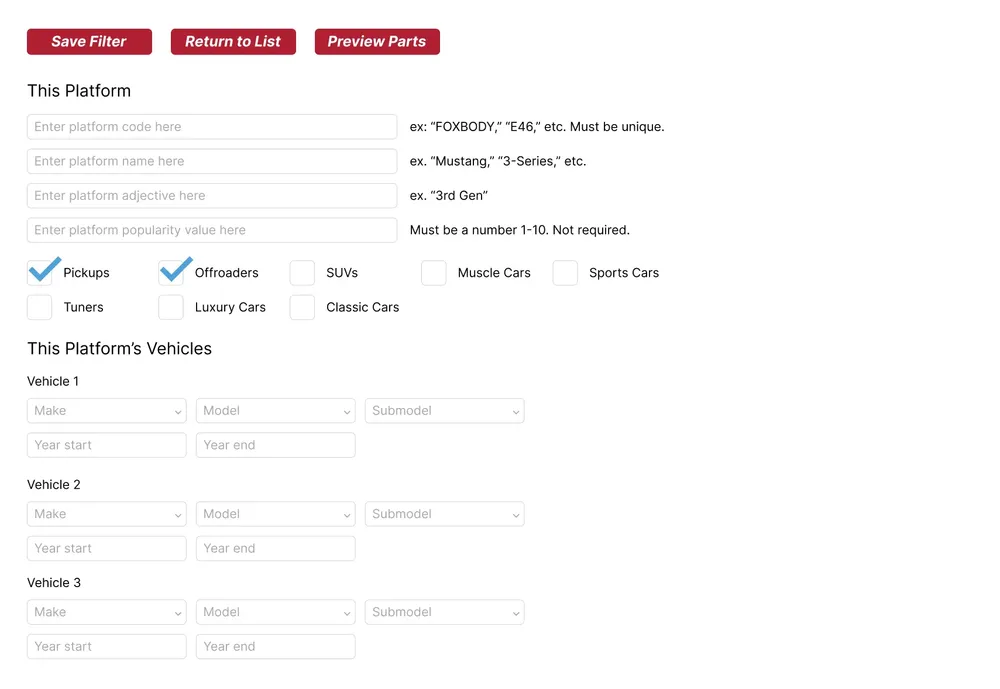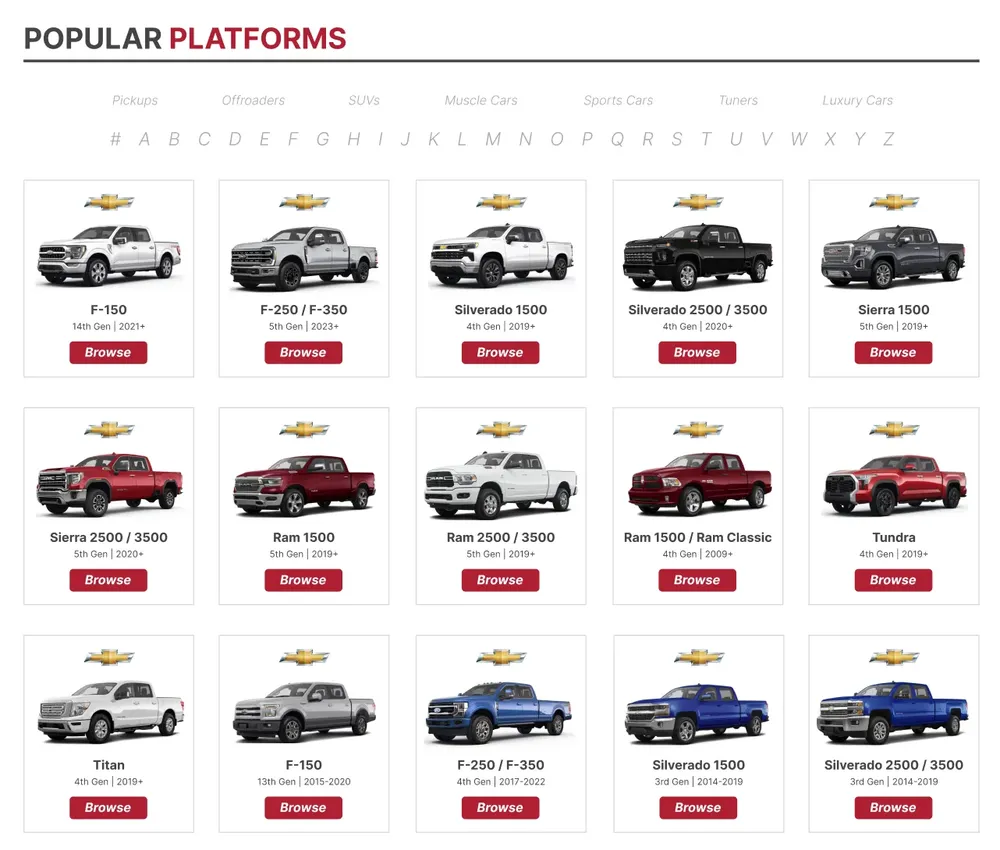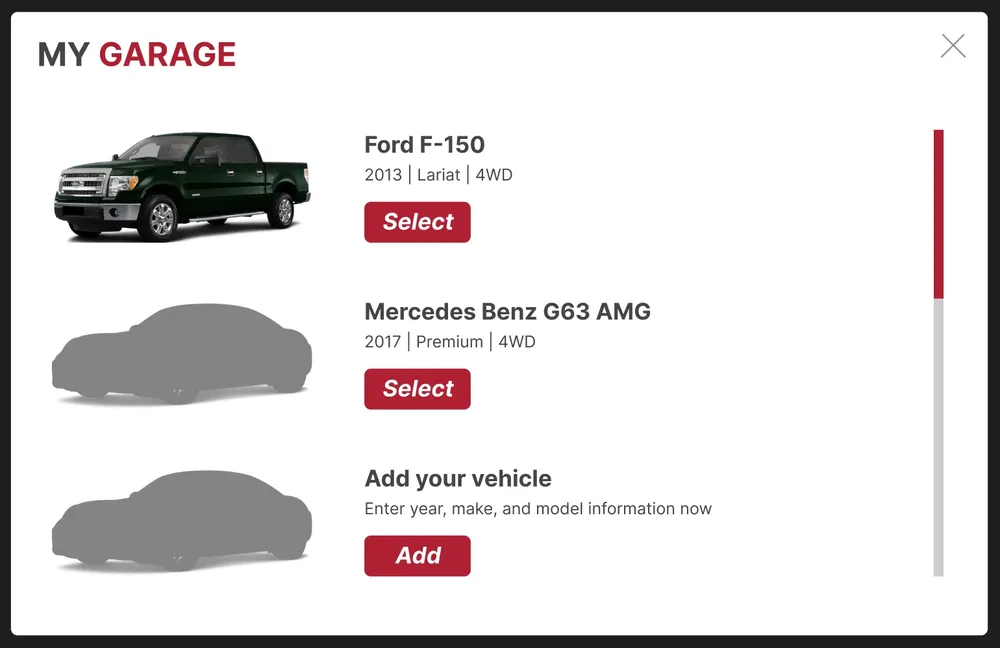D2C Site Prototype
Project Overview
Rev Supply Co. has built its business on marketplace performance, primarily on Amazon. But not all customers start their journey there. Many begin with a Google search. Setting up paid ads to drive Google search traffic to Amazon listings was one of my first tasks as Marketing Director. But as soon as that was satisfactory, I met with stakeholders to discuss better options than sending paid traffic to a fee-heavy marketplace. Executives gave me the green light to begin development of Rev’s first direct-to-consumer (D2C) e-commerce website, designed to intercept those shoppers and convert them on our own turf.
The plan is to capture traffic from our paid search ads and reroute it to our own site, where we can control the experience and the margin. This isn’t about taking business away from Amazon. It’s simply a more intelligent investment of ad money we already spend, claiming leads for our own rather than allowing them to land in a marketplace where price and competition dominate.
I directed feature planning, UX design, data modeling, API strategy, partner integration, and testing. This was the first comprehensive web project I directed without writing any code myself — a deliberate move to maximize my impact as a strategist and leader.

Objectives
- Launch the company’s first D2C e-commerce website
- Intercept search shoppers before they reach Amazon
- Streamline the customer journey through intuitive vehicle selection
- Scale merchandising via high-level automotive knowledge
- Build a flexible base for three existing child brands and future brand rollouts
Core Features
- Visual vehicle selector with dynamic image display via Evox API
- Platform-based navigation system with dynamic, tailored landing pages
- Enterprise-grade Magento 2 architecture built for multi-store expansion
- Integrated drop-shipping vendor fulfillment
The Platforms System
The platform system changes how customers browse. In addition to conventional year, make, and model selection from dropdowns, users can browse by vehicle platform — a mechanically consistent group of vehicles sold under different names, brands, or generations. By offering platform-based entry points, the site makes product discovery faster, more intuitive, and more emotionally satisfying. Shoppers recognize their vehicle visually and culturally, far more swiftly than by decoding a dropdown.
System Logic
A “platform” refers to a specific group of vehicles that are mechanically identical and will accept (mostly) the same parts. One easy example would be “all 2017+ Jeep Wranglers” (the Jeep JL platform). But platforms aren’t always so cut and dry.
For example, all Ram pickups from 2009 to 2018 are 4th-generation Rams. From 2009 to 2010, they were sold as Dodge Rams. In 2011, they dropped the Dodge nameplate. The 5th-generation Ram released in 2019. But not all Rams from 2019+ are 5th-generation Rams. Ram now sells the 1500 Classic, a new 4th-generation Ram, alongside the new 5th-generation Ram. In other words, the 2009–2010 Dodge Ram 1500, the 2011–2018 Ram 1500, and the 2019+ Ram 1500 Classic are all the same vehicle.
Another example: Toyota and Subaru built a small sports car together in 2012. Subaru sold it as the Subaru BRZ. Toyota sold it as the Toyota GT86 in most markets, except in some areas where it was named the Toyota FT86. In the U.S., it was initially sold under the Scion brand as the FR-S. After Scion was terminated in 2016, Toyota continued to sell the car as the Toyota 86 GT. Though the year, make, and model data is scattered, it’s fundamentally one chassis.

In our backend, each platform is defined by a unique code and name (e.g., “E46,” “Mustang”), a descriptive adjective (e.g., “3rd Gen”), and an optional ubiquity score from 1 to 10 (which is based on United States DMV data as well as general popularity). We also apply category tags like PICKUPS, OFFROADERS, and SPORTSCARS to improve filtering and merchandising. These tags are non-exclusive, allowing a single platform to fall into multiple user-facing categories. A Jeep Gladiator is both an OFFROADER and a PICKUP, for instance.
Each platform is then mapped to one or more vehicle records using year, make, model, and submodel attributes. This relational structure allows us to group vehicles with shared mechanical DNA under a single identity. Not every vehicle needs to be attached to a platform. Initially, we only include our highest-ubiquity platforms and add more post-launch.
These associations are critical. The platform system fills the gap left by traditional filters by grouping vehicles that may be marketed differently but are mechanically the same. This reduces funnel friction and creates a sense of comfort and community for vehicle owners, especially savvy enthusiasts.

Platform Landing Pages
Every platform links to its own unique landing page which is SEO-optimized and curated for maximum conversion. These pages feature:
- Hand-tailored hero banners and promotional graphics
- Product grids filtered by platform compatibility
- Special deals and messaging tailored to the platform
This creates a sense of unity among platform owners — like 4th-gen Ram drivers — by showcasing a deep understanding of their vehicle and providing a highly relevant product experience.
Ubiquity-Aware Product Descriptions
The UBIQUITY attribute assigned as part of the platforms module is also used to procedurally generate strings based on a part’s actual relevance to vehicles on the road. If (for argument’s sake) a lug kit fits new Silverados, new Tundras, new Tahoes, most modern Camrys, and the 1987 Nissan 200SX, the Magento template engine relies on the UBIQUITY attribute to be smart enough not to include the 200SX where space is limited. This greatly reduces the need for human content intervention.
Visual Vehicle Selector
When a user begins with the traditional selector, the experience is still visual. As they choose their year, make, and model, the system displays a photo of their vehicle. This image is pulled automatically via the Evox image API. After selecting, the vehicle is saved in the user’s “garage,” where its image and configuration are shown persistently.
This reduces anxiety around fitment and reassures the user that they’re shopping correctly.

Drop-Shipping Vendor Integration
I initiated vendor partnerships to extend SKU coverage beyond our own warehouses. These drop-ship integrations:
- Allow us to launch a complete catalog faster
- Reduce inventory risk
- Support high-ubiquity platforms with full part kits
Drop-ship SKUs are flagged in our data pipeline and routed automatically to fulfillment partners.
Magento and Brand Scalability
The site is built on Magento 2. The entire architecture is reusable across all Rev Supply Co. brands. Coyote Accessories is the first to launch. WAP and PDQ will follow with different theming and merchandising but the same structure.
User Study
To test the platforms feature, I conducted a user study with 18 real vehicle owners. Each was asked to find parts for their vehicle using two site versions: one with only the traditional selector, and one with the additional platform system.
Results (via HotJar recordings):
- 42% faster time to first product click
- 63% lower bounce rate
- Higher completion among users who were uncertain about trim or nameplate
- Repeated comments about visual recognition and clarity
Project Status
Althogh still in beta, Hoboken is already deployed at www.coyoteaccessories.com. For now, it’s reserved for B2B customers, serving as a buying portal for registered businesses. All D2C content and consumer-oriented features, like the platforms system, are purposely disabled. Development is nearing completion, but an official launch date hasn’t been determined. Amazon remains the team’s top priority.